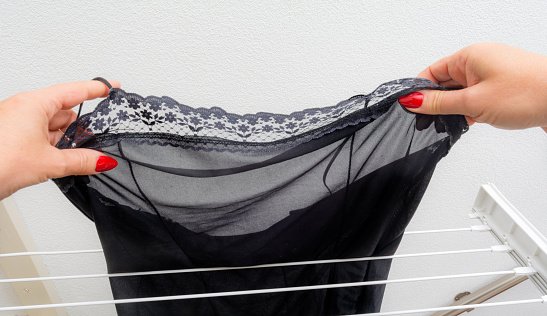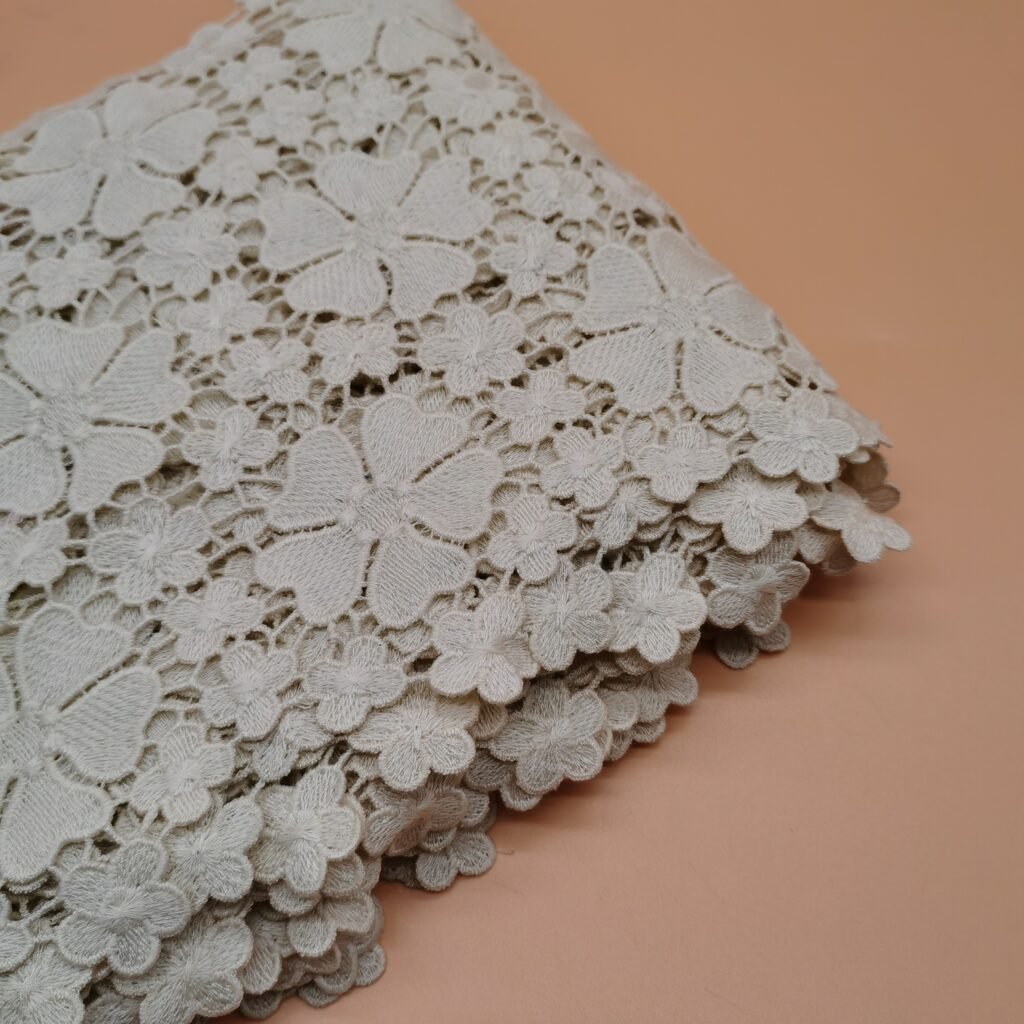Lace fabric is a delicate and beautiful material that can add a touch of elegance to any garment or home decor item. However, because it is so delicate, it requires special care in order to keep it looking its best. In this blog post, we will explore some tips and techniques for taking good care of lace fabric.

First, it’s important to understand that lace is a type of openwork fabric, which means it has intricate patterns of holes and gaps in the fabric. This delicate nature means that lace is more susceptible to damage than other fabrics, and it can easily become torn or snagged. In order to protect your lace fabric from damage, it’s important to handle it with care.
Washing guide
When washing lace fabric, it’s best to use a gentle detergent and cool water. Avoid using harsh detergents, which can cause the fabric to become discolored or weakened. It’s also important to avoid wringing or twisting the fabric, as this can cause it to stretch or tear. Instead, gently squeeze the water out of the fabric, being careful not to apply too much pressure.

To wash a delicate lace piece, you will need:
- A sink or basin
- A mild detergent or soap
- A toothbrush (optional)
- A towel
- A mesh laundry bag (optional)
Here is the procedure:
- Fill the sink or basin with lukewarm water.
- Add a small amount of mild detergent or soap to the water and mix it until it forms a light suds.
- Place the lace piece in the water and gently agitate it using your hands to allow the detergent to penetrate the fabric.
- If the lace piece is heavily soiled or has tough stains, you can use a toothbrush to gently scrub the affected areas.
- Once the lace piece is clean, carefully rinse it in lukewarm water to remove any remaining soap or detergent.
- Place the lace piece on a towel and roll it up to gently squeeze out any excess water.
- If you are worried about the lace piece losing its shape or tangling during the drying process, you can place it in a mesh laundry bag before hanging it to dry.
- Allow the lace piece to air dry completely before wearing or storing it.
Note: It is important to use lukewarm water and a mild detergent or soap when washing delicate lace fabrics to avoid damaging the lace. Avoid using hot water or harsh detergents, as these can cause the lace to shrink, fade, or become brittle.
Avoid direct sunlight or other sources of intense heat
Another important tip for taking care of lace fabric is to avoid exposing it to direct sunlight or other sources of intense heat. Lace can fade or become discolored when exposed to sunlight, so it’s best to keep it out of direct sunlight whenever possible. If you need to hang lace fabric to dry, be sure to do so in a shaded area.
Storing lace
When it comes to storing lace fabric, it’s important to protect it from dust and other debris. Lace can easily become dirty or damaged if it’s left out in the open, so it’s best to keep it stored in a clean, dry place. A box or plastic container with a lid is a good option, as it will keep the fabric clean and protected.

Ironing lace in a proper way
In addition to washing and storing lace fabric properly, there are a few other tips and techniques you can use to take good care of this delicate material. For example, if your lace fabric becomes wrinkled, you can use a cool iron to smooth it out. Be sure to use a pressing cloth between the iron and the lace, and avoid applying too much heat or pressure. This will help prevent the lace from becoming stretched or damaged.
Temperature is a very important factor while ironing lace. Using too high of a temperature can cause the lace to melt, burn, or shrink. On the other hand, using too low of a temperature may not be sufficient to smooth out wrinkles or creases in the lace. In order to do in correctly, see below recommended ironing temperatures for different compositions from thespruce.com.
| Fabric | Temperature (Fahrenheit) | Temperature (Celsius) |
| Linen | 445 F | 230 C |
| Triacetate | 390 F | 200 C |
| Cotton | 400 F | 204 C |
| Viscose/Rayon | 375 F | 190 C |
| Wool | 300 F | 148 C |
| Polyester | 300 F | 148 C |
| Silk | 300 F | 148 C |
| Acetate | 290 F | 143 C |
| Acrylic | 275 F | 135 C |
| Lycra/Spandex | 275 F | 135 C |
| Nylon | 275 F | 135 C |
Avoid touch with sharp objects
Another important tip for taking care of lace fabric is to avoid using pins or other sharp objects when working with it. Lace is easily snagged or torn by sharp objects, so it’s best to use fabric glue or other adhesive products instead. This will help protect your lace fabric from damage and keep it looking its best.
Finishing the edges properly
Finally, if you’re using lace fabric to make clothing or other items, be sure to take the time to finish the edges properly. Lace can easily become frayed or unraveled if it’s not properly finished, so it’s important to take the time to do this correctly. There are several different techniques you can use to finish the edges of lace fabric, including zigzag stitching, hemming, and binding.
Conclusion
In conclusion, taking good care of lace fabric requires a bit of extra attention and care. By following the tips and techniques outlined in this blog post, you can help protect your lace fabric from damage and keep it looking beautiful for years to come. Whether you’re using lace fabric to make clothing, home decor items, or other projects, these tips will help you keep your lace fabric looking its best.


